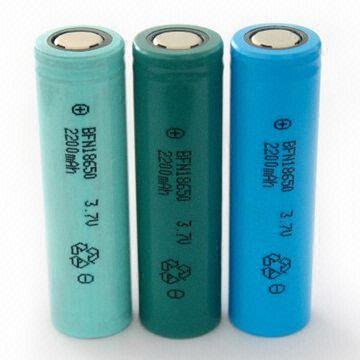Is energy storage the new holy grail of a clean energy future? Energy storage can take the form of large batteries, flywheels, pumped hydro facilities, compressed-air energy storage, and many others. However, the exciting “new kid on the block” is battery storage, largely because of its relatively small size, modularity and rapidly declining costs.
California is at the forefront of the storage revolution and policymakers have recognized the potential role of energy storage in a number of new programs. The biggest of these programs is the AB 2514 energy storage procurement program. This law required the California Public Utilities Commission to consider creating an energy storage procurement mandate for utilities. And that’s about all the law did, leaving most issues to the discretion of the CPUC. The law did, however, require that any storage that is mandated must also be cost-effective. That is, the mandate couldn’t lead to any net costs for ratepayers. (This is a common requirement in California for new programs, despite the common myth that legislators and policymakers don’t care about costs.)
The CPUC took up the challenge that Sacramento offered with AB 2514, and in late 2013 (in Decision 13-10-040) the CPUC created a new program requiring utilities to procure 1.325 gigawatts of new storage by 2024. This is a lot of storage, enough to produce power at peak output for over 1 million California homes, as well as to provide numerous other grid benefits at the same time.
Under this new program, the utilities must issue requests for offers every two years starting in December 2014, with defined megawatt targets for each RFO. The targets are divided into three “buckets”: 1) transmission-interconnected; 2) distribution-interconnected and 3) behind-the-meter projects such as electric vehicles or home battery systems for solar.
The CPUC deferred ruling on the issue of cost-effectiveness until the utilities submit their energy procurement program rules for consideration by the Commission. The utilities submitted these applications in late February and the CPUC is now considering the merits of these applications and various objections filed by parties, including those filed by my client in this proceeding, the Green Power Institute.
Time will tell how the CPUC rules on cost-effectiveness. Even though many parties do have concerns about the details of this major new program, it is fairly certain that over the next ten years, this program will be a strong boost to the nascent energy storage market in California and, by extension, in many other jurisdictions in the U.S. and abroad.
The hope, of course, is that by providing a strong market signal to producers and developers, the price for storage technologies will come down further. We’ve seen strong price declines in solar power and many other renewable energy technologies in the last few years. Battery technologies have also come down significantly in cost in the same timeframe. There is still, however, much room for further declines as production scales up. Figure 1 shows that most storage technologies are either in the early deployment stage or still in R&D. Early deployment technologies like lithium-based batteries are promising, and the hope is that new programs like those in California will promote rapid market maturation and bring costs down dramatically, as we’ve seen happen with solar and wind power.
FIGURE: Stationary Energy Storage Technology Maturity
Source: IEA Energy Storage Technology Roadmap 2014
California has two other programs relevant to the energy storage market: SCE’s Local Capacity Requirements RFO and the Self-Generation Incentive Program. It is likely that any storage procured in these programs will count toward the 1.325-gigawatt goal of the energy storage procurement program, but these other programs will entail different types of RFOs.
SCE’s Local Capacity Requirements RFO
Southern California Edison’s LCR RFO is designed to ensure that sufficient local power is available in the West L.A. Basin. The program extends through 2020, and SCE will offer a number of RFOs during this period. This program is open to all types of energy production, including renewables (except nuclear and coal, which aren’t allowed in California), but also demand response, energy efficiency and energy storage technologies. In fact, the CPUC required SCE to procure 50 megawatts of energy storage via this RFO by 2020.
My company submitted a bid to SCE under this RFO in December 2013, for a 2-megawatt battery project, on behalf of the L.A.-based company Absolutely Solar. The project was to be owned by Absolutely Solar, but SCE would operate the facility as a grid reliability asset. It would connect to the distribution grid and provide local energy and resource adequacy, as well as other grid benefits. Our project didn’t get short-listed by SCE, but we learned a lot about the process and we look forward to submitting additional bids in the future.
Self-Generation Incentive Program
The Self-Generation Incentive Program is solely for behind-the-meter storage projects and provides a generous rebate to owners of new energy storage systems. Only a few megawatts of storage are on-line under this program for now, but interest in the rebate is growing. The utilities are also now more incentivized to work with power customers to install batteries under the SGIP because these projects count toward the utility’s behind-the-meter storage mandate under the AB 2514 energy storage procurement framework.
Congress is also attempting to kick-start storage around the U.S. by passing a bill that would make energy storage technologies eligible for tax credits. This should be a bipartisan issue — but that’s not always the case in an election year.
So, are we facing a tsunami of energy storage in California over the next decade? My feeling is that we’ll see plenty of opportunities to bid for contracts to sell storage capacity to the utilities, under the programs mentioned here, as well as possible new ones. The timeframe for development of projects is far less certain, due largely to the long timeframe that the utilities have to develop these projects (up until 2024 in most cases), along with various flexibility mechanisms provided by the CPUC. These mechanisms allow the utilities to defer procurement until later years in the program under certain circumstances.
Again, time will tell how the details unfold. But we are in for an interesting time as these programs develop. While the timeframe for development of these energy storage programs is uncertain, it is clear that we will need a significant amount of storage to firm up renewables like wind and solar as these technologies come to dominate the grid in coming decades.
This article was originally published on Greentech Media. Republished with permission











